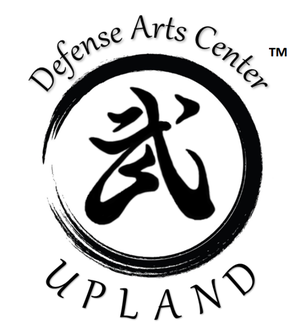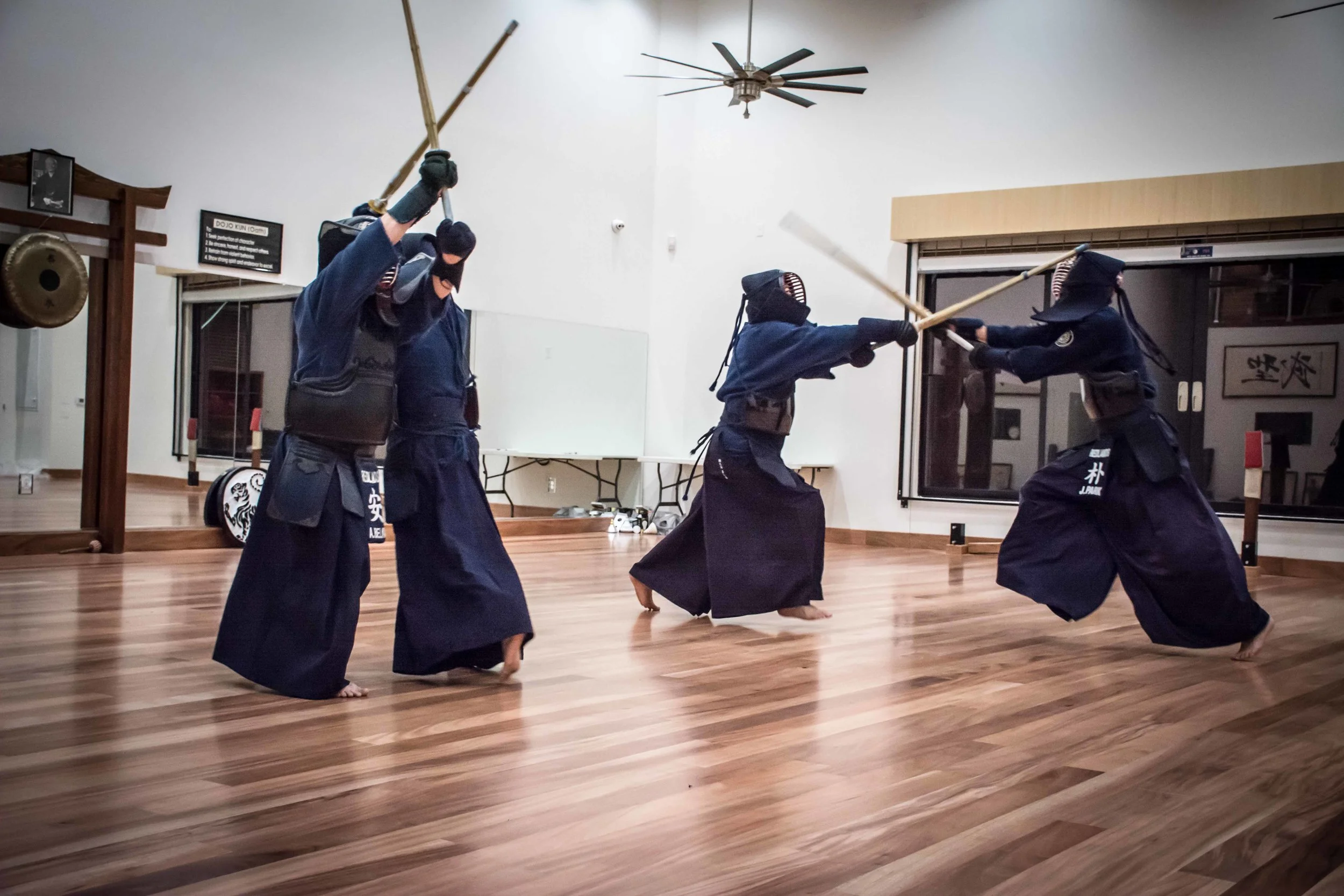KENDO
Instructors: Aaron Belko, 4th Dan and Brian Olson, 5th Dan
Sundays 3 pm to 5 pm
Class Schedule Page
Class Fees Page
Contact Us to Visit or Sign Up!
What is Kendo?
Welcome to the bamboo sword-swinging, esoteric yelling, protective body armor wearing, fast-paced fighting world of the martial art known as Kendo!
Kendo (sword way) is a Japanese martial art derived from ancient swordsmanship techniques over the last few 100 years. It was adopted in Korea as the art of “Kumdo” and in China as “Gendo". The protective armor (bogu) and bamboo swords (shinai) used are the same and the point systems and targets are the same. Both Kendoist and Kumdoist compete together at the World Kendo Championships organized by the Federation of International Kendo. However, the way each art is performed varies, possibly reflecting cultural differences. Japanese Kendo tends to emphasize being “Decisive and Precise”, Korean Kumdo tends to stress the display of “Dynamics”, and Chinese Gendo artists tend to show more “Fantasy” in their sword techniques. Each style has its benefits and deficiencies in technical expression, level of skills, and maturity. Real sword arts are very different in each country, with roots at least a few thousand years old. Some of these ancient real sword forms have survived to today and are being practiced under different names.
Special note:
- All new members can start class at any time
Kendo Training at the Defense Arts Center (DAC) dojo (pdf)
A Technical Guide of Kendo (pdf)
Kendo Kata by Kingston Kendo Club (pdf)
Kendo Fundamentals
*Will concentrate on the foundational concepts of Kendo. Focusing on reiho (etiquette), ashisabaki (footwork), chakuso (shinai grip), and datotsu (basic strikes and thrusts). In addition, there will be instruction on the use of bokken by way of Bokuto-ni-yoru Kendo Kihon-waza Keiko-ho and Nihon Kendo Kata. This class is mainly for beginners and does not require a bogu (armor).
Advanced Geiko
*Will concentrate on kenshi who are in bogu. Focusing on not only kihon waza (basic techniques) but progressing to shikake-waza , oji-waza, and finally keiko-ho. Also, there will instruction in advanced concepts such as maai, hasuji, seme, zanshin,yuko-datotsu, and ki-ken-tai-ichi. Only students in bogu are allowed to participate, unless given permission by the sensei.
Basic Open Geiko
- Stretching/Warm up
- Suburi: 30 jogeiburi, 30 shomen uchi, 30 sayumen uchi, 30-60 hayasuburi
- Footwork: suriashi
(Put on bogu after seated meditation and opening bow.) - 3 times kirikaeshi (motodachi not blocking)
- 3 times kirikaeshi (motodachi blocking)
- 5 times shomen uchi
- 5 times kote-men uchi
- 5 times do uchi
- 5 times hiki-waza (men, kote, and do)
- 5 times uchikomigeiko (3 strikes)
- Jigeiko
- 3 times kirikaeshi
(Bow and be seated. Remove bogu and prepare for closing meditation.)
Kendo Waza
Shikake-waza (offensive techniques) for Beginners
- Ippon-uchi-waza (basic striking techniques)
- Nidan-sandan-waza (combination techniques)
- Debana-waza (moment of attack techniques)
Oji-waza(counter techniques) for Mudansha/Yudansha
- Harai-waza(parry and strike techniques)
- Hiki-waza (stepping back techniques)
- Kaeishi-waza (parry and strike techniques)
- Nuki-waza (evading and striking techniques)
- Amashi-waza (step back and evading techniques)
- Suriage-waza (mid-strike parry and striking techniques)
- Uchiotoshi-waza (downward parry and striking techniques)
- Maki-waza (twisting parry and striking techniques)
- Katsugi-waza (shouldering the sword techniques)
- Jodan-waza (striking from jodan kamae)
Books and resources for the Kendo enthusiast:
What is Kendo
by George McCall
Kendo Coaching Tips and Drills
by George McCall
Kendo Tokuhon
by Noma Hisashi, Ed. George McCall
The Way of Kendo and Kenjitsu
by Darrell Craig
Kendo: Culture of the Sword
by Alex Bennet
The Heart of Kendo
by Darrell Craig
Videos
Kendo Education Website - All United States Kendo Foundation
Photos
Click any photo to open the viewer
Click the upper right-hand X to return to this page
In Gratitude to Sensei Inkee Lee
The following video is a wonderful tribute to Sensei Inkee Lee. I remain grateful that he was able to establish Kendo/Kumdo at my dojo (Defense Arts Center Upland) before moving to Oregon. Sensei, your legacy and Budo spirit will continue on.
Sincerely, Sensei Ty Aponte
This slide show contains memories of my Kumdo. The first few slides shows my very early days - such as 1967 thru 1974 while I was in my 20th. The later slides show my Kumdo activities in the USA. I established JoChun Kwan - the Kumdo school of my own in 1992 in Los Angeles. Many good Kumdo man were produced through diligent practices in JoChun Kwan. Now, I am retiring my position as the principle instructor at the JoChun Kwan to 6th Dan Master Yoon Soo Shin. Joon Suh Lee helped me make this slide show, and he will serve JoChun Kwan as a vice principle and director of general administration. I would like to thank my successors for continuing to do a great work for the coming years. Farewell to all Kumdo/Kendo people
Sensei Inkee Lee
July 14, 2016


















































